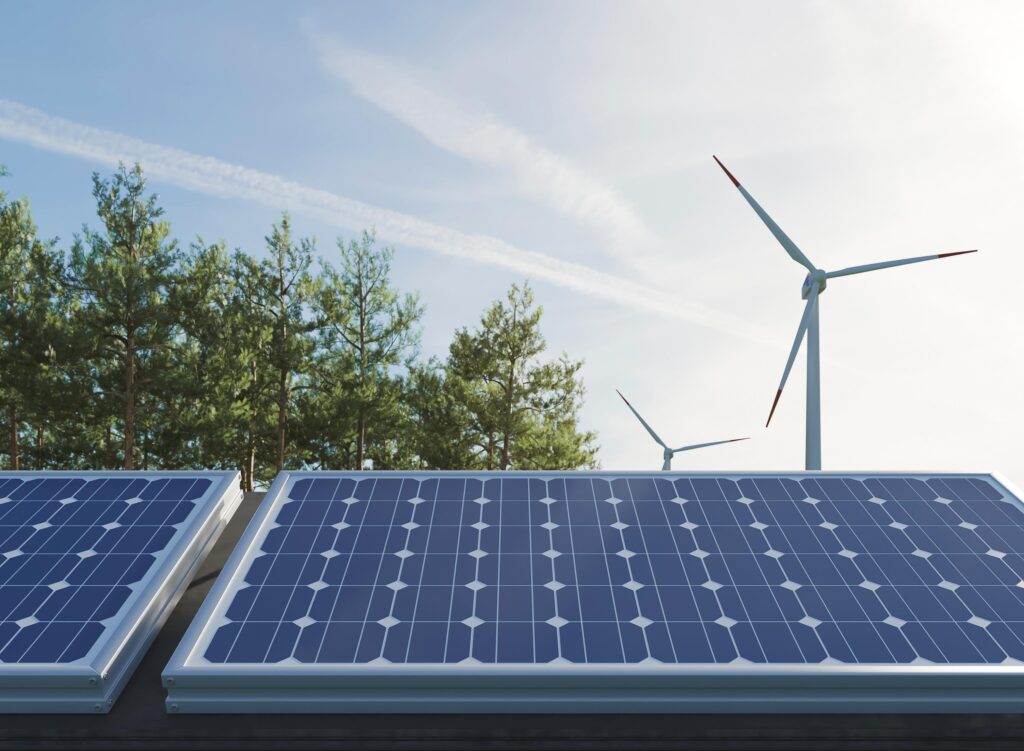Read about the Sooraj se Rozgaari scheme in an article written by Vinayak Chatterjee and published in Business Standard.
Centralized Procurement and Decentralized Deployment of Photovoltaic Modules could transform rural India.
A detailed white-paper prepared by The Infravision Foundation proposes a central government sponsored scheme that fundamentally looks at Rooftop Solar Photovoltaics (RTPV) as the next trailblazing income enhancing opportunity, targeted largely to those at bottom of the pyramid, and largely in rural areas. It has the potential to be a hugely impactful intervention to aid poverty alleviation by converting the free sunlight falling on rooftops and courtyards into income for households. For instance, in China, RTPV is one of the identified ten initiatives rolled out by the government to uplift rural households out of poverty. Last year, the 100% solarization of the village of Modhera in the Mehsana district of Gujarat has demonstrated the transformative potential of rooftop solar in an Indian village.
For a variety of reasons, Rooftop Solar in India has not yet been the success it was planned to be. That is a pity. A scheme, of the type suggested, seeks to breathe fresh life into this area, targeting not just “green”, but even more importantly, an innovative income-generating scheme. It could well be called Sooraj Se Rozgaari (or, Earnings from Sunlight).
The proposed scheme assumes the customer-mix in the table below.

As per this customer configuration, the Central Government gets involved through the Indian Renewable Energy Development Agency (IREDA). With central government financial assistance, IREDA procures and deploys rooftop modules and assisted infrastructure via its extended arm of State Renewable Energy Development Agencies (SRDAs). Bulk procurement by IREDA is expected to reduce capital costs by providing high-volume orders to module manufacturers. SRDAs secure state regulatory approvals on benchmark costs of RTPV including state specific grid installation charges and a fair developer margin. Benchmark costs reflect locational and services markup on top of the capital cost discovered by IREDA.
A new generation of local “Developers” have to market the scheme and source consumer interest and thereafter, approach SRDAs with the request for necessary modules and infrastructure. They then install the same at consumers’ premises and are responsible for maintenance for at least fifteen years. They get paid a fixed installation fee and yearly maintenance fees from SRDAs for their services.
Consumers may have to share part of the benchmark costs depending upon which category they fit in- from low-income households to institutional or small businesses. They will have to agree upon their share of self-use of the electricity generated from RTPV and the balance that will be considered as sold to SRDAs (unless bought by the discom), for which they will be suitably compensated.
The SRDAs aggregate such balance electricity from all participating consumers, and are encouraged to maximize revenue by sale of this power to other discoms, large consumers, and power exchanges. Price arbitrage opportunities – that is difference between compensation paid to participating consumers and the realized sale price for electricity sold to other parties – will ultimately determine the net financial assistance support by central government.
Currently, the rooftop subsidy programs run by the Ministry of New and Renewable Energy, requires consumers to bear about 60% of total costs. For the suggested program it is recommended that consumers be grouped into three distinct categories: (i) low income households; (ii) social, institutional and small businesses such as municipal schools & district hospitals, NGOs, Farmer Produce Organizations, SME or micro-SME businesses and, (iii) regular income households. It is proposed that the low income households get full capital grant, that is they do not have to pay for any share at all of the costs for RTPV installation and maintenance. The social/institutional/small businesses bear 80% of the total costs, while the households with regular incomes bear 60% of the cost, which is as per the current practice.
Developers have the responsibility to market the program benefits to consumers and agglomerate the demand. Once the consumer puts in his/her contribution (as per set guidelines), the Developer installs the requisite RTPV on consumers’ premises. The developer gets paid a fixed installation fee and yearly maintenance fees from SRDAs for its services. This naturally creates a new set of local energy sector entrepreneurs, in line with the government’s vision of creating such opportunities at the district level.
The table below outlines the interlinkages between the various players:

The proposed centralized scheme is expected to add a total of 20 GW residential RTPV capacity over a five-year period. The “NET” central sector budgetary support required will be approximately ₹19,950 Crores over a fifteen year life assumed for the scheme.
Above all, a low income household with limited roof-space stands to benefit (based on the final interplay of assumptions) anything from ₹3500 – ₹6000 per annum from the “free” sunlight on its abode. Combined with the ‘green effect’ such a poverty alleviating opportunity can surely not be left unexploited.
[Vinayak Chatterjee is an Infrastructure Sector expert. He is also Founder and Managing Trustee of The Infravision Foundation. Technical inputs have been provided by Rasika Athawale, Distinguished Fellow at The Infravision Foundation.]


